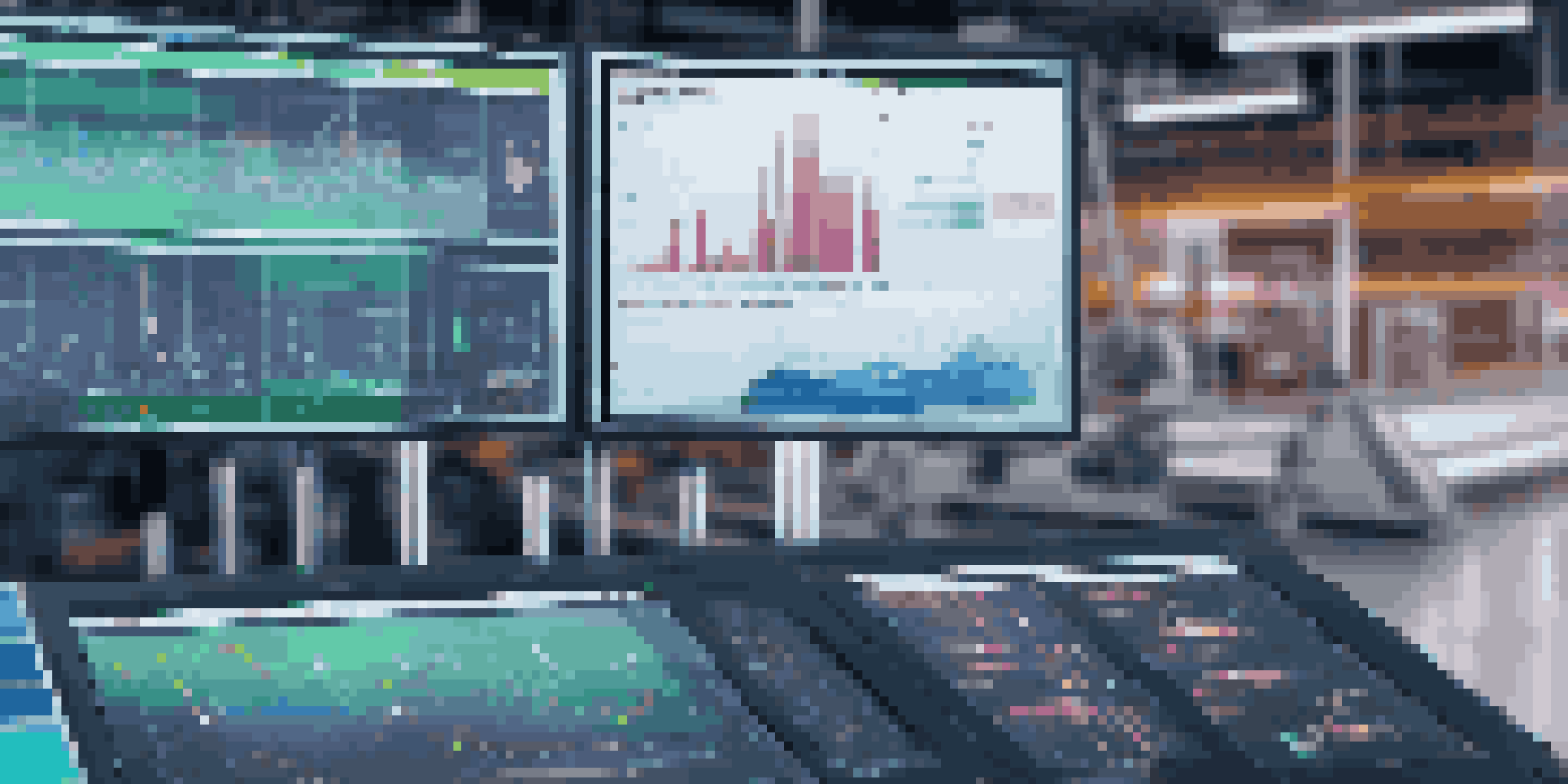Digital Twins: Bridging the Gap Between Physical and Virtual

Understanding Digital Twins: What Are They?
Digital twins are virtual replicas of physical entities, like machines or entire systems. Imagine having a perfect digital version of your car, where every detail—its engine, mileage, and even performance data—can be monitored in real-time. This concept allows for simulations that can predict outcomes based on various scenarios, significantly enhancing operational efficiency.
Digital twins are changing the way we design, create, and manage everything from products to entire systems, providing a deeper understanding of our operations.
The beauty of digital twins lies in their ability to mirror real-world dynamics. For instance, in manufacturing, a digital twin of a production line can help identify bottlenecks before they occur, saving time and resources. With advancements in IoT (Internet of Things) technology, these digital counterparts can receive live data, making them even more valuable for analysis.
In essence, digital twins bridge the gap between the physical and virtual realms, offering insights that were previously hard to achieve. They’re not just theoretical models; they’re practical tools that organizations can leverage to optimize performance and innovate processes.
How Digital Twins Work: The Technology Behind Them
At the core of a digital twin is a combination of sensors, data analytics, and real-time monitoring. Sensors collect data from the physical object, which is then transmitted to the digital twin for analysis. Think of it as having a personal trainer for your equipment, constantly checking its health and performance and providing feedback.

Data analytics play a crucial role in interpreting the vast amounts of information collected. This analysis helps in understanding patterns and predicting potential failures before they happen. For example, if a sensor indicates that a machine part is overheating, the digital twin can recommend preventive maintenance, thereby avoiding costly downtime.
Ultimately, the technology behind digital twins allows for a seamless exchange of information between the physical and virtual worlds. This integration not only enhances visibility into operations but also fosters informed decision-making that can drive innovation across various industries.
Applications of Digital Twins Across Industries
Digital twins are revolutionizing industries ranging from manufacturing to healthcare. In the automotive sector, for instance, companies use digital twins to simulate vehicle performance under different conditions, allowing for improved design and safety features. It's like having a test track in a computer, where every tweak can be analyzed without risking real lives.
The power of digital twins lies in their ability to replicate reality in a virtual space, allowing us to innovate and optimize like never before.
In healthcare, digital twins can represent individual patients, allowing doctors to test treatment plans virtually before applying them. This personalized approach not only enhances patient care but also optimizes resources within healthcare systems. Imagine being able to predict how a patient will respond to a certain medication based on their unique digital profile.
The versatility of digital twins makes them invaluable in many settings, driving efficiency, reducing costs, and improving outcomes. As technology continues to evolve, we can expect even more innovative applications that will further bridge the gap between our physical and digital lives.
Benefits of Using Digital Twins in Business
One of the most significant benefits of digital twins is their ability to enhance operational efficiency. By providing real-time insights, organizations can identify inefficiencies and make data-driven decisions. This proactive approach often leads to cost savings, as businesses can address issues before they escalate.
Additionally, digital twins facilitate better product development and innovation. By simulating various scenarios, companies can experiment with design changes without the need for physical prototypes. This not only speeds up the development process but also enhances creativity, allowing teams to explore ideas that may have been too risky to test in the real world.
Moreover, the predictive capabilities of digital twins enhance risk management. Organizations can foresee potential failures and mitigate risks by analyzing historical data and trends, ultimately improving their resilience against unforeseen challenges. The overall result is a more agile and competitive business landscape.
Challenges in Implementing Digital Twin Technology
While the benefits of digital twins are compelling, implementing this technology is not without its challenges. One major hurdle is the integration of diverse data sources, as organizations often rely on various systems that may not communicate seamlessly. It's akin to trying to assemble a puzzle with pieces from different sets; without the right compatibility, the full picture remains elusive.
Data security and privacy also pose significant concerns. The real-time data collected by digital twins can be sensitive, and protecting this information is paramount. Companies must invest in robust cybersecurity measures to ensure that their digital twins are not vulnerable to breaches or cyber threats.
Lastly, there is often a skills gap within organizations. Successfully managing and utilizing digital twin technology requires a workforce equipped with specialized knowledge in data analytics and IoT. Investing in training and development for employees is essential to overcome this challenge and fully leverage the potential of digital twins.
The Future of Digital Twins: Trends to Watch
Looking ahead, digital twins are expected to evolve significantly, driven by advancements in AI and machine learning. These technologies will enable even more sophisticated simulations and predictive capabilities, making digital twins smarter and more intuitive. Imagine a digital twin that not only reflects current conditions but also anticipates future needs, much like a crystal ball for your operations.
Integration with augmented reality (AR) is another exciting trend on the horizon. By combining digital twins with AR, users can visualize and interact with data in real-time, enhancing training and operational efficiency. This immersive experience could revolutionize how teams collaborate and make decisions, bringing data to life in ways we've never seen before.
As industries continue to embrace digital transformation, the adoption of digital twins is likely to accelerate. Organizations that leverage this technology will not only gain a competitive edge but will also be better positioned to adapt to the ever-changing landscape of their respective markets.
Getting Started with Digital Twins: A Roadmap
If you're considering adopting digital twin technology, the first step is to identify key areas within your business that could benefit from it. Start small by selecting a specific process or asset to create a digital twin for. This focused approach allows you to test the waters and understand the technology’s impact without overwhelming your resources.
Next, invest in the necessary infrastructure, including sensors and data analytics tools. This may involve collaborating with technology partners or vendors who specialize in digital twin solutions. Remember, the goal is to create a cohesive system that can effectively collect and analyze data to drive insights.

Finally, foster a culture of innovation within your organization. Encourage teams to experiment with the data and insights derived from the digital twin. By embracing a mindset that values continuous improvement and learning, you'll be well on your way to unlocking the full potential of digital twins in your operations.